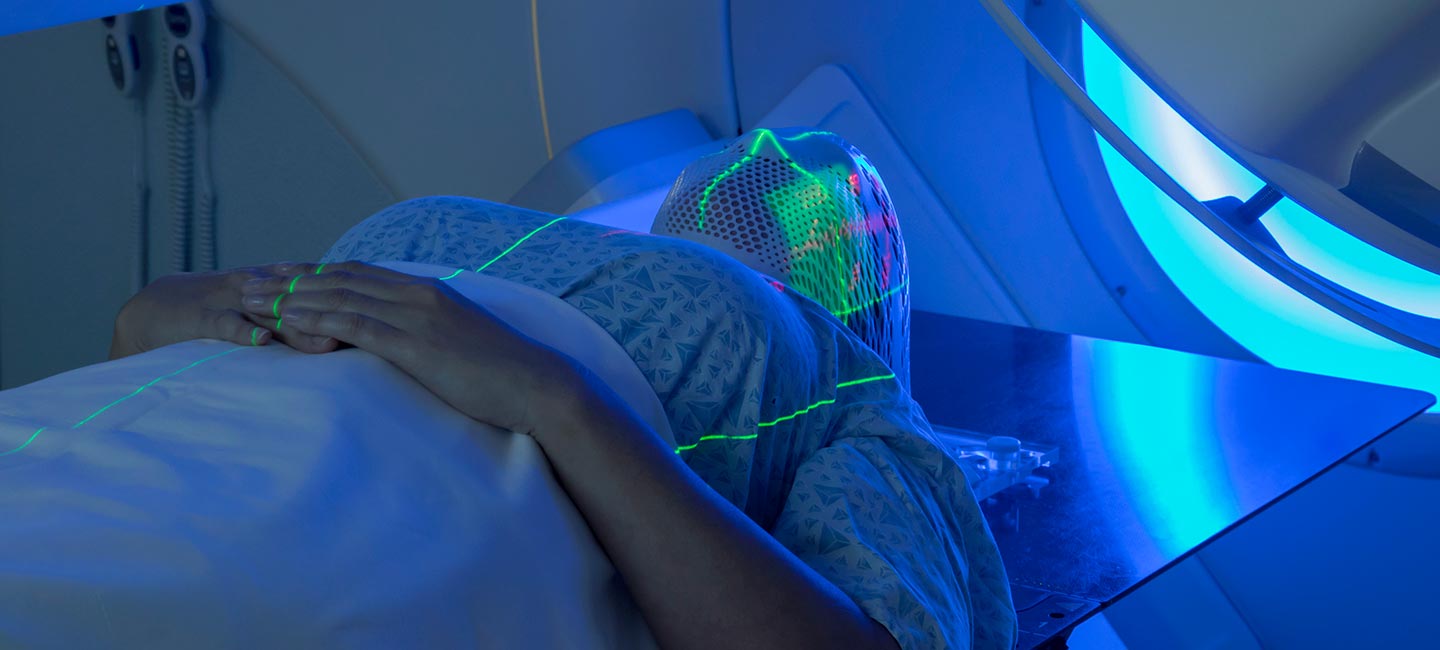Stereotactic Body Radiation Offers New Option for Head and Neck Cancer
When Carl Weber was diagnosed with stage 4 tonsil cancer in 2015, he underwent radiation and chemotherapy.
But his cancer never went away, and his options for further treatment were limited.
“If a patient has recurrent disease after radiation, the next step is usually surgery,” said Dr. Michelle Echevarria, a head and neck radiation oncologist at Moffitt Cancer Center. “But if those patients are not candidates for surgery, there are limited options. Radiation carries a lot of implications in terms of long-term toxicity when it is done a second time around.”
Because the average survival for patients with recurrent head and neck cancers who don’t have surgery is low, Moffitt oncologists wanted to find a different way to control the disease that would not only decrease mortality, but also increase quality of life.
Moffitt launched a clinical trial studying stereotactic body radiation (SBRT), a type of radiation therapy that administers a very high dose of radiation aimed at a precise location. It is given in five treatments over the course of a week and a half, compared to six to seven weeks for standard radiation.
SBRT, which is more commonly used in the treatment of liver and lung cancers, has not traditionally been used for head and neck cancers. For the trial, SBRT was given in conjunction with chemotherapy to 20 patients who had previously undergone radiation to the same area at least six months before and were ineligible or declined surgery.

Dr. Michelle Echevarria, head and neck radiation oncologist
“Our main purpose was to assess the safety of doing SBRT in combination with chemotherapy and determine the maximum tolerated dose, which had never been done in a clinical trial before,” said Echevarria. “A secondary objective was to see the impact on overall survival.”
The trials results, which were presented at this year’s American Society of Clinical Oncology meeting, show that SBRT in combination with chemotherapy is safe and was well-tolerated.
Weber was one of the patients enrolled in the trial. “It was pretty short treatment compared to the first radiation treatment,” he said. “I was in and out very quickly.”
Besides saving him time, Weber also responded well. “SBRT did the job it was supposed to,” he said. He still has one area on his neck his doctors are keeping an eye on and will return for a surveillance appointment in six months.
Once the trial data is published and peer reviewed, Moffitt can work on using SBRT with chemotherapy on a routine basis for head and neck cancer patients



